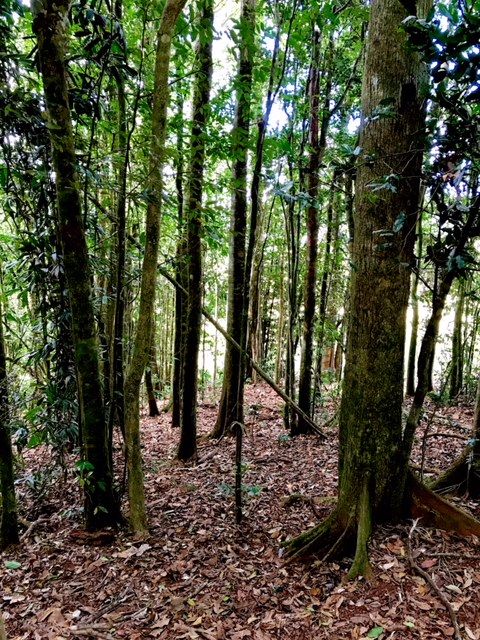Freemans ForestFreemans Forest Nature Refuge provides a critical link in the wildlife corridor joining the World Heritage listed Curtain Fig and Lake Eacham National Parks on the Atherton Tablelands in Far North Queensland. Habitat fragmentation threatens the long term survival of many of the ecosystems on the Tablelands which have been very heavily cleared because of the rich volcanic soils. The local rainforest restoration group, TREAT, has had a long term project to join a number of the major remnants and has been working for many years on the Peterson Creek Corridor between the Mabi Forest at Curtain Fig and the Hipsy Forest at Lake Eacham. | A major challenge for the corridor project was linking Peterson Creek with the Lake Eacham rainforest. The late Ian Freeman resolved this issue by purchasing a largely cleared property that sat between the two. Assisted by TREAT, Ian then about the task of revegetating a huge area of rainforest. With incredible persistence and hard work he dedicated many years to this effort until he was cruelly struck down by cancer. Ian bequested his property to South Endeavour and we are now managing it as custodians of his wonderful legacy. The remaining two hectares of revegetation required to complete this part of the corridor was planted in 2017. By 2020 canopy closure over the whole of the corridor will be complete. With parts of the reforested area now seven years old much of the nature refuge is already being used by a wide range of local fauna. A set of monitoring stations has been established to document the recolonisation of the rainforest One of the more interesting inhabitants of the rainforest on the nature refuge is the musky rat-kangaroo, Hypsiprymnodon moschatus, after whom the Hypsy Forest is named. |  Mature Hypsy Forest on the nature refuge Mature Hypsy Forest on the nature refuge
| | This rat-kangaroo is a primitive form of macropod with a prehensile tail and opposable thumbs on its hind feet which help it climb. It is our smallest kangaroo. It is endemic to the Wet Tropics. Unusual for macropods it is diurnal and spends the nights in small grass nests. |
|



